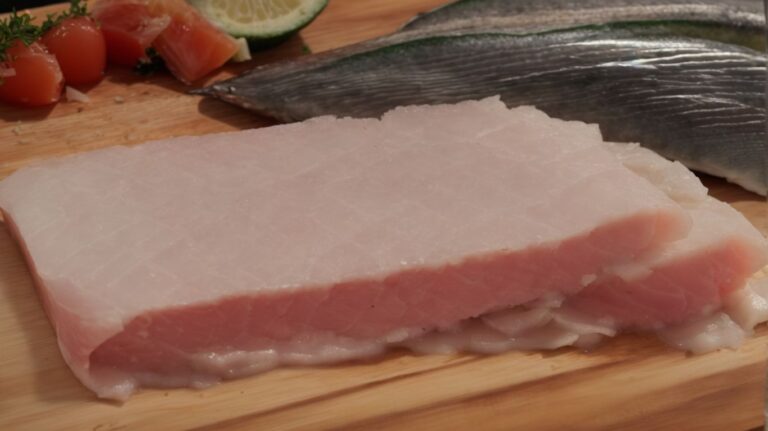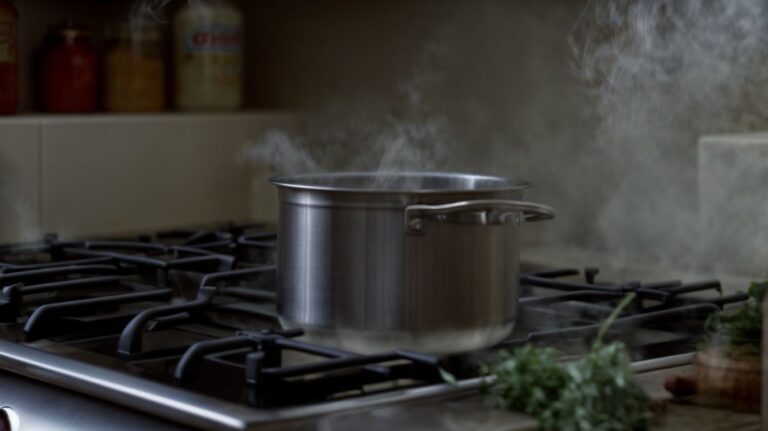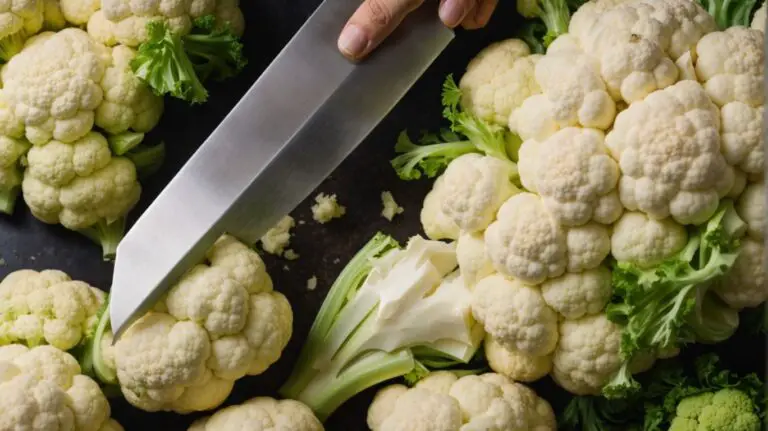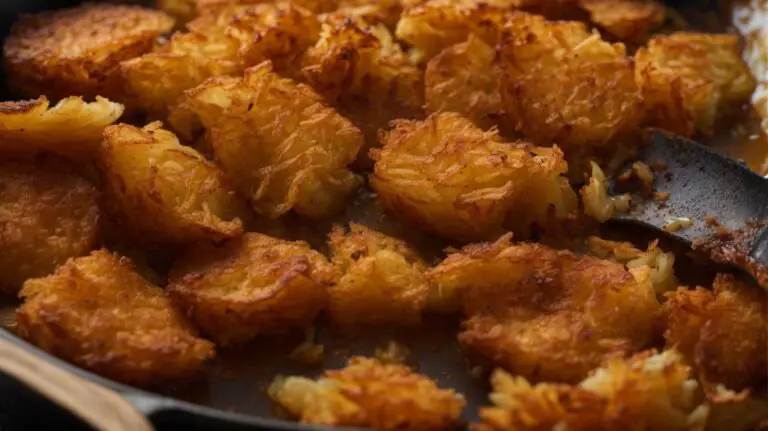How to Cook Pork Chops After Brining?
Are you looking to take your pork chops to the next level? Brining might just be the secret ingredient you’ve been missing.
In this article, we’ll explore what brining is and why you should consider brining your pork chops. We’ll also dive into the benefits of brining, how to brine pork chops effectively, and how to cook them to perfection afterwards.
With some delicious recipes and cooking tips thrown in, you’ll be a pork chop pro in no time!
Key Takeaways:
What is Brining?
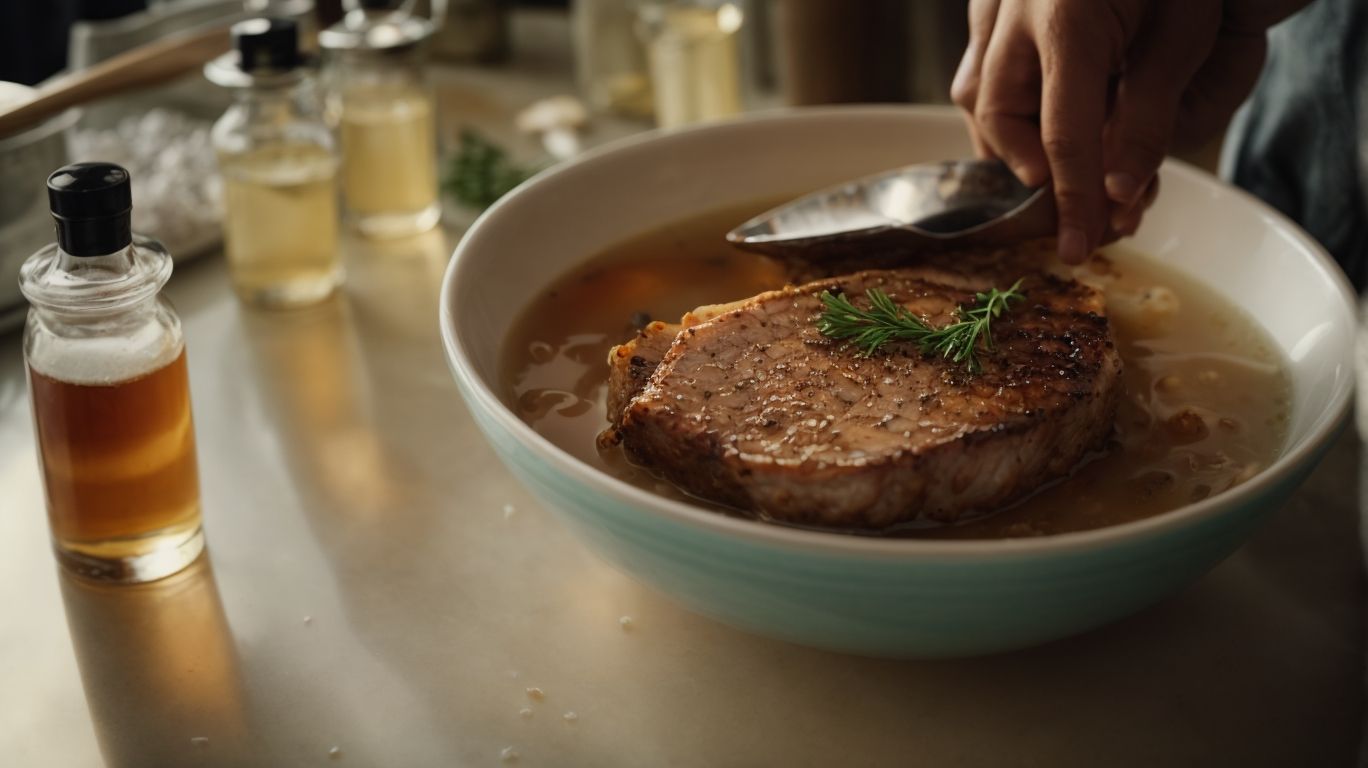
Credits: Poormet.Com – Douglas Campbell
Brining is a process of soaking meat, such as pork chops, in a solution of water, salt, and other flavorings like garlic and sage to enhance its moisture and flavor.
When meat is brined, it absorbs the salted liquid, resulting in a juicier and more flavorful end product. The salt in the brine helps the meat retain moisture during the cooking process, preventing it from drying out. Ingredients like garlic and sage infuse the meat with aromatic and savory notes, elevating its taste profile. The combination of water, salt, and flavorings in the brine creates a perfect environment for the meat to become tender and tasty, making it a popular technique among home cooks and professional chefs alike.
Why Should You Brine Pork Chops?
Brining pork chops is essential to retain moisture and infuse them with flavorful notes, enhancing the overall taste and tenderness of the meat.
By submerging the pork chops in a solution of water, salt, sugar, and aromatics, you allow the meat to absorb the liquid, resulting in a juicier and more succulent final dish. This process not only prevents the meat from drying out during cooking but also helps in breaking down tough proteins, leading to a more tender texture.
What Are the Benefits of Brining Pork Chops?
Brining pork chops offers numerous benefits, including improved moisture retention and enhanced flavor profiles that elevate the dining experience.
By soaking the pork chops in a carefully crafted brine solution composed of salt, sugar, herbs, and spices, you allow the meat to absorb the liquid, leading to increased juiciness and tenderness during the cooking process. The osmosis that occurs through brining helps to lock in moisture, preventing the pork chops from drying out, even when exposed to high temperatures. The flavor infusion from the brine enhances the natural taste of the pork, resulting in a more delicious and well-seasoned final dish.
How to Brine Pork Chops?
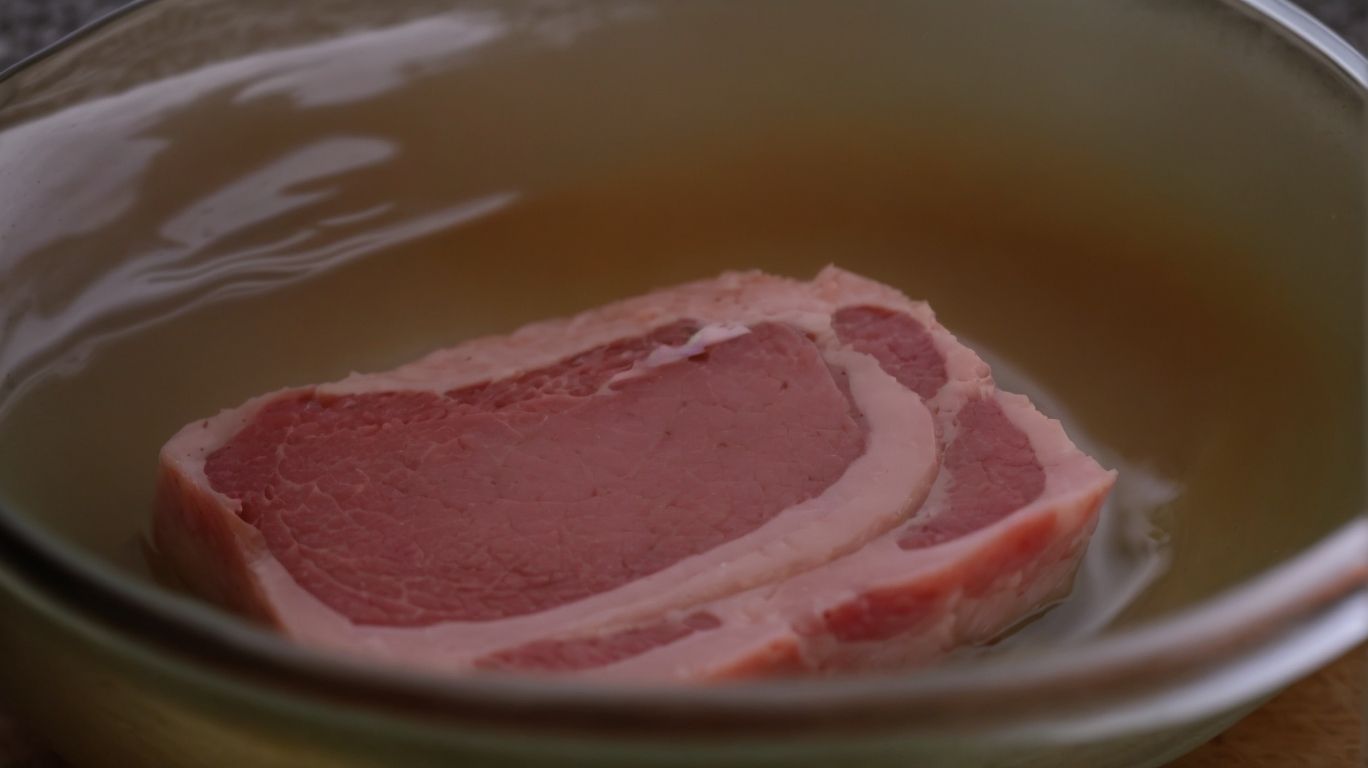
Credits: Poormet.Com – George Scott
To brine pork chops effectively, follow a simple process that involves creating a brine solution with water, salt, garlic, sage, and other flavorings.
Begin by heating water in a pot and adding kosher salt until dissolved, creating the base of your brine solution. Next, crush garlic cloves and sage leaves to release their flavors, then stir them into the salted water. For additional enhancements, consider integrating peppercorns, bay leaves, or even a touch of sweetness with maple syrup.
Once your flavorful brine is ready, submerge the pork chops in the solution, ensuring they are fully covered. Refrigerate the pork chops in the brine for at least 4 hours, allowing the flavors to permeate the meat and tenderize it.
What Are the Ingredients for Brining Pork Chops?
The key ingredients for brining pork chops include water, salt, garlic, sage, and a touch of balsamic vinegar to enhance the overall flavor profile.
Water is essential in brining as it helps to keep the pork chops moist during the cooking process, preventing them from drying out. Salt is crucial for flavor enhancement and tenderizing the meat by breaking down its fibers, while garlic adds a savory depth to the brine. Sage brings a herbaceous note that complements the pork beautifully, and balsamic vinegar contributes a tangy sweetness that balances the richness of the meat.
What Is the Ratio of Salt to Water for Brining Pork Chops?
The ideal ratio of salt to water for brining pork chops is crucial to achieve the perfect balance of seasoning and moisture absorption in the meat.
When preparing a brine for pork chops, it’s essential to consider the salt-to-water ratio carefully. The salt in the brine not only seasons the meat but also helps enhance the natural flavors and juiciness of the pork. Getting this ratio right ensures that the meat is adequately seasoned throughout while allowing for optimal moisture retention. The water in the brine plays a vital role in carrying the salt and other flavors into the meat, resulting in a more flavorful and succulent final dish.
How Long Should You Brine Pork Chops?
The recommended brining duration for pork chops is crucial for allowing the flavors to penetrate the meat and ensure optimal tenderness prior to cooking.
For pork chops, it is generally advised to brine them for at least 4 to 12 hours. This soaking time allows the salt solution to not only infuse the meat with flavor but also helps in enhancing its moisture retention capacity. The brining process also acts as a natural tenderizer, breaking down the muscle fibers slightly, leading to juicier and more succulent chops once cooked.
How to Cook Pork Chops After Brining?
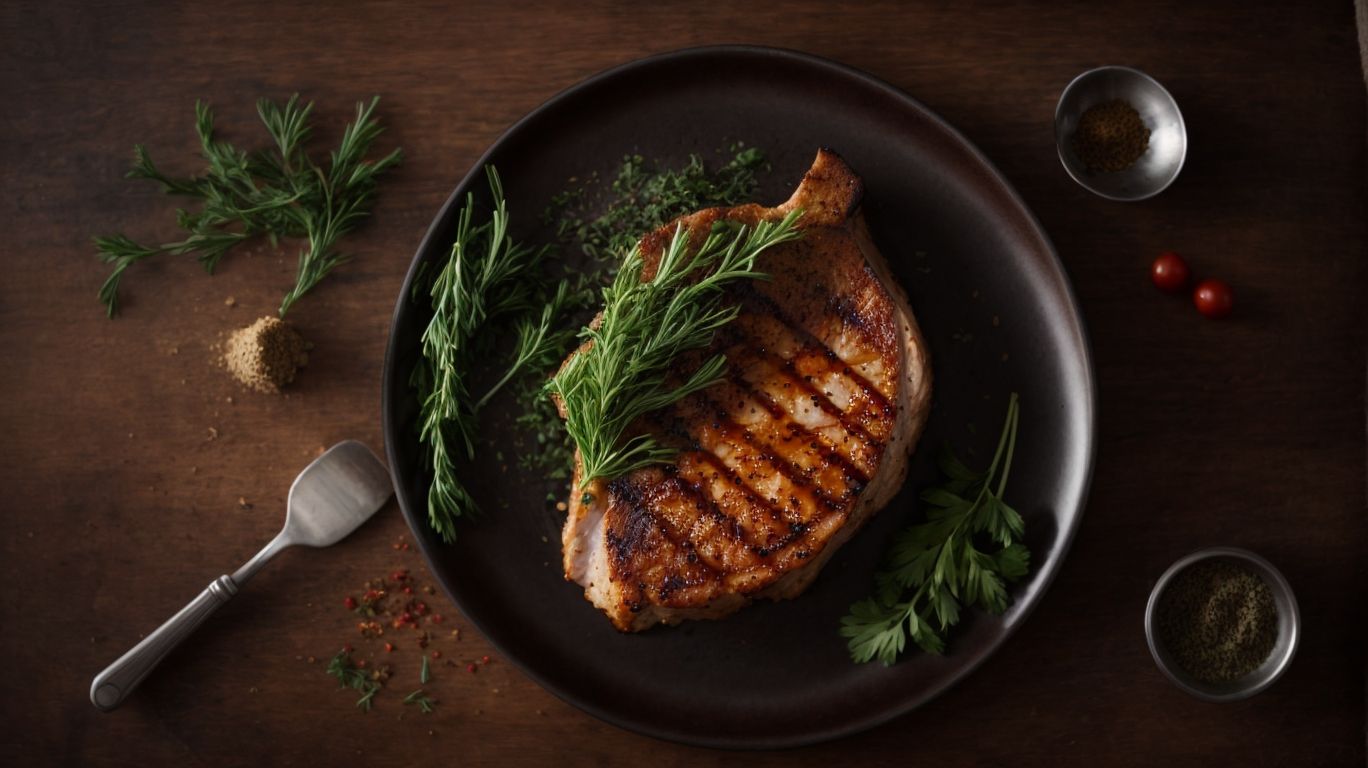
Credits: Poormet.Com – Stephen Scott
After brining, cooking pork chops can be done through various methods like pan-searing or oven-baking, ensuring a flavorful outcome with a touch of balsamic vinegar for added richness.
Once the pork chops are adequately brined, it’s essential to consider the cooking techniques to lock in the flavors and juices. When opting for pan-searing, heat a skillet over medium-high heat and sear the chops for a couple of minutes on each side until they develop a golden crust. For those preferring oven-baking, preheat the oven to 375°F and place the chops on a baking sheet, letting them cook for about 20-25 minutes until they reach an internal temperature of 145°F. Both methods are enhanced by a drizzle of balsamic vinegar just before serving.
What Are the Different Cooking Methods for Pork Chops?
Cooking methods for pork chops can vary from pan-searing for a crispy exterior to oven-baking for a moist and tender finish, offering diverse culinary experiences.
When pan-searing pork chops, the high heat helps to quickly sear the surface, creating a flavorful caramelization that adds a rich taste to the meat. This method is ideal for thinner cuts where a quick cook time is essential to prevent overcooking.
On the other hand, oven-baking involves slower cooking at a lower temperature, allowing the pork chops to cook gently and evenly, resulting in a more juicy and succulent final dish. The oven’s gentle heat helps to retain the moisture within the meat, leading to a tender texture that is deliciously satisfying.
What Are the Recommended Cooking Temperatures for Pork Chops?
The optimal cooking temperatures for pork chops, verified with a reliable tool like the Thermapen MK4, ensure safe consumption and succulent results.
When cooking pork chops, it is crucial to reach an internal temperature of 145°F (63°C) to kill any harmful bacteria without overcooking the meat, resulting in a dry texture.
Using a high-quality thermometer like the Thermapen MK4 allows you to achieve this precision effortlessly.
Once the pork chops reach the recommended temperature, let them rest for a few minutes to allow the juices to redistribute evenly, ensuring a juicy and flavorful outcome.
How Long Should You Cook Pork Chops After Brining?
The post-brining cooking duration for pork chops depends on the method used, with a focus on ensuring thorough cooking without compromising the meat’s tenderness.
When pan-searing brined pork chops, aim for a cooking time of about 4-5 minutes per side on medium-high heat until the internal temperature reaches 145°F (63°C).
For grilling, grill the pork chops over medium heat for approximately 4-5 minutes per side, again ensuring they reach an internal temperature of 145°F (63°C).
If baking is your preferred method, place the chops in a preheated oven at 400°F (200°C) and cook for around 20-25 minutes, or until the internal temperature meets the recommended 145°F (63°C).
What Are Some Tips for Cooking Perfect Pork Chops?
Achieving perfectly cooked pork chops involves key tips such as using butter for richness and flavor enhancement, ensuring a delightful culinary experience.
To further elevate the flavors of your pork chops, consider marinating them in a mixture of butter, garlic, and fresh herbs before cooking. This infusion of flavors will penetrate the meat, resulting in a more robust taste.
When searing your pork chops, baste them with melted butter and fresh thyme to enhance their juiciness and impart a delicious aroma. This simple step can make a substantial difference in the overall taste and texture of the dish.
How to Tell If Pork Chops are Cooked Properly?
Determining the proper doneness of pork chops involves using a meat thermometer to ensure they reach the recommended internal temperature for safe consumption.
When cooking pork chops, it’s crucial to avoid overcooking to maintain their juiciness and flavor. Insert the meat thermometer into the thickest part of the chop, away from bone and fat, to get an accurate reading. The pork chops should reach an internal temperature of 145°F (63°C) for medium-rare and 160°F (71°C) for medium, as per USDA guidelines. Remember, letting the pork chops rest after cooking allows the juices to redistribute, resulting in tender and succulent meat.
What Are Some Delicious Pork Chop Recipes After Brining?
After brining, explore delectable pork chop recipes featuring seasonal ingredients like butternut squash and mushrooms, perfect for fall and winter dining experiences.
Regarding preparing these savory dishes, consider a mouthwatering combination of seared pork chops glazed with a savory mushroom sauce that tantalizes the taste buds. For a wholesome twist, pair these succulent chops with a side of roasted butternut squash, caramelized to perfection with a hint of maple syrup and fragrant herbs.
To enhance the flavors further, incorporate earthy rosemary and thyme into the marinade for the pork chops, infusing them with a depth of aromatic essence. The natural sweetness of the squash complements the umami taste of the mushrooms, creating a harmonious blend of flavors on the plate.
Grilled Pork Chops with Honey Mustard Glaze
Indulge in the flavors of fall and winter with a tantalizing recipe for grilled pork chops drizzled with a luscious honey mustard glaze, a perfect blend of savory and sweet.
Start by selecting fresh pork chops with a nice marbling of fat to ensure juicy and flavorful results.
Next, season the chops generously with a mix of autumnal spices such as cinnamon, paprika, and a touch of nutmeg. Allow the meat to marinate for at least an hour to let the flavors meld together.
As you fire up the grill, the aroma of the spices will fill the crisp air, heralding the comforting meal to come.
Pan-Seared Pork Chops with Apple Cider Pan Sauce
Savor the essence of fall and winter with a mouthwatering recipe for pan-seared pork chops adorned with a delightful apple cider pan sauce, exuding warmth and comfort.
Begin by selecting high-quality pork chops, preferably bone-in for added flavor and juiciness. Season them generously with a blend of sage, thyme, salt, and black pepper to enhance the natural meaty taste. Allow the chops to rest at room temperature for about 20 minutes to ensure even cooking.
As the pork chops come to room temperature, heat a skillet over medium-high heat. Add a splash of olive oil to the pan and sear the chops for about 3-4 minutes on each side until they develop a beautiful golden crust.
Next, lower the heat and add sliced apples, onions, and a dash of cinnamon to the skillet. Let the ingredients caramelize and infuse the dish with their sweet and savory flavors.
Baked Parmesan Crusted Pork Chops
Experience the comforting flavors of winter with a delightful recipe for baked Parmesan crusted pork chops, a satisfying dish that marries crispy textures with cheesy goodness.
This delectable dish involves a simple yet effective process. Begin by preheating the oven to 400°F (200°C) to ensure the pork chops cook evenly. Choose boneless pork chops, ideally about 1 inch thick, for the best results.
Next, prepare a coating mixture using a combination of parmesan cheese, breadcrumbs, garlic powder, and parsley. Dip each pork chop into beaten eggs before coating them with the cheesy mixture, ensuring even coverage.
Place the coated pork chops on a baking sheet lined with parchment paper to bake for around 25-30 minutes, or until the crust turns golden brown.
Frequently Asked Questions
How to Cook Pork Chops After Brining?
Brining is a popular method of adding flavor and moisture to pork chops before cooking. But once you’ve brined your pork chops, what’s the best way to cook them to perfection?
What is brining and why should I do it?
Brining is the process of soaking meat in a solution of salt and water for a period of time before cooking. This helps add moisture to the meat and can also enhance the flavor.
How long should I brine my pork chops?
The length of time you should brine your pork chops depends on their thickness. As a general rule, brine pork chops for about one hour per inch of thickness.
Do I need to rinse the brine off before cooking?
Yes, it’s important to rinse the brine off your pork chops before cooking. This will prevent them from being too salty.
What cooking methods work best for pork chops after brining?
Pork chops can be cooked in a variety of ways after brining, including grilling, pan-frying, or roasting in the oven. The method you choose will depend on your personal preference and the equipment you have available.
How can I tell when my pork chops are done cooking?
The best way to ensure your pork chops are cooked to the proper temperature is to use a meat thermometer. Pork chops should be cooked to an internal temperature of 145°F (63°C).


